CHEM 720/7200 - Mass Spectrometry
Semester: Winter 2024
Professor: W. Gabryelski | Discipline: Analytical | Campus: GuelphDescription
Background Info: CHEM 7200/720 [0.5] is a graduate course in Mass Spectrometry (MS) with prior enrolments of 15-30 students in the class.
During the three decades, mass spectrometry has evolved as a powerful technique for analyzing a variety of materials ranging from small molecules to large biopolymers. Mass spectrometry has been used in many areas of research including chemistry, biochemistry, environmental science, pharmacology, medicine, and forensics. This course provides an opportunity for you to learn about this exciting and indispensable technique.
Learning Objectives: No prior knowledge of mass spectrometry is required for students participating in the course. General principles of mass spectrometry will be described at a level appropriate to graduate students in chemistry and biochemistry. The first part of the course deals with instrumental aspects of mass spectrometry, whereas the second part involves general methodology important applications of this technique in research. Students will leave the course with sufficient knowledge to effectively design and execute mass spectrometry experiments in their research. Students will be trained to become experts in the interpretation of mass spectral data.
Course content:
1. Introduction, History and Unique Capabilities of Mass Spectrometry
2. Instruments and Instrumental Techniques in Mass Spectrometry
2.1. Ion Separation and Mass Measurement for Different Types of Mass Analyzers
2.1.1. Quadrupole MS
2.1.2. Ion Trap MS
2.1.3. Time-of-Flight (TOF) MS
2.1.4. Fourier Transform-Ion Cyclotron Resonance (FT-ICR) MS
2.1.5. Sector Instruments
2.2. Tandem Mass Spectrometry (MS-MS)
2.2.1. Ion Activation Techniques
2.2.2. Collision Induced Dissociation (CID)
2.2.3. Laser Induced Dissociation (LID)
2.2.4 Tandem Mass Spectrometry in Space
2.2.5. Tandem Mass Spectrometry in Time
2.2.6. Electron Induced Ionization Methods
2.2.7. Recent Instrumental Development in MS (Hybrid Instruments)
3. Ionization Methods in Mass Spectrometry
3.1. Electron-Impact Ionization (EI)
3.2. Chemical Ionization (CI)
3.3. Matrix-Assisted Laser Desorption Ionization (MALDI)
3.3.1. Laser Desorption Ionization from a Porous Silicon/Metal Surface
3.3.2. Imaging MALDI Mass Spectrometry
3.4. Spray, Electrospray and Nano-electrospray Ionization
3.5. Ambient Ionization Methods (DART, DESI ….)
3.6. Interpretation of MS Spectra from Different Ionization Methods
4. General Principles of Gas-Phase Ion Chemistry
4.1 Reactions of Odd Electron Radical Molecular Ions
4.2 Reactions of Even Electron Positive Ions
4.3 Reactions of Even Electron Negative Ions
5. Sample Introduction (Inlet Systems in MS)
5.1. Combination of Chemical Separation Methods and Mass Spectrometry
5.1.2. Gas Chromatography-Mass Spectrometry (GC-MS)
5.1.2. Liquid Chromatography-Mass Spectrometry (LC-MS)
5.1.3. Capillary Electrophoresis-Mass Spectrometry (CE-MS)
5.1.4. Ion Mobility Spectroscopy-Mass Spectrometry (IMS-MS)
6. Overview of Biological Applications of Mass Spectrometry
6.1. MS Strategies for Characterization of Proteins and Peptides (Dr. Diane Brewer)
6.2. MS Strategies for Characterization of Lipids and Metabolites
6.3. MS Strategies for Characterization of Carbohydrates
6.4. MS Strategies for Characterization of DNA
7. Overview of MS Applications in Environmental and Drug Analysis
8. Quantitative Mass Spectrometry
8.1. Selected/Multiple Reaction Monitoring (SRM)
8.2. Selectivity, Sensitivity, and Limits of Detection
8.3. Standards and Calibration Methods
9. De Novo Identification Techniques in Mass Spectrometry
9.1. Spectral Databases
9.2 Principles of Gas-Phase Ion Chemistry
Materials
There is no single textbook that would adequately cover the material for this course. A good introductory reference to mass spectrometry is the book by Edmond De Hoffmann and Vincent Stroobant, “Mass Spectrometry: Principles and Applications”, 2nd ed., John Wiley, 2002 (translated from French). If you decide to purchase this book, buy the less expensive paper-bound version (e.g. from amazon.com). Remember that even newest mass spectrometry textbooks will become obsolete in few years. Various textbooks, journal articles and review papers are used as a source of information for my lectures. Lecture notes and course materials will be available on the course website.
The CHEM 7200/720 Mass Spectrometry course site: In order to login to the course site (https://courselink.uoguelph.ca/shared/login/login.html) under CHEM 7200/720 Mass Spectrometry, you will use your id and password. If you are a Guelph student, you will have to use your central login account username (id) and password to view the lecture materials. If you are a Waterloo student, your id and your password will be provided for you by e-mail.
Evaluation
The course grade will be based on the following criteria:
• Written assignment I (20% of course grade)
• Written assignment II (40% of course grade)
• Written assignment III (max. 5 % that will be added to your course grade). Supplementary Assignment III will be distributed together with the final exam
• Final TAKE HOME exam (40 % of course grade)
Lab/Project
Written Assignment I: The first written assignment will be a short take-home exam. The PDF template of this exam will be posted on the course website at the beginning of the term. Each student will have to answer (independently) questions related to instrumental aspects of mass spectrometry. Reference articles will be posted together with the assignment. You should e-mail your assignment to me before the submission deadline.
Written Assignment II: During the course, each student will work on preparing a research proposal (NSERC Discovery Grant Proposal format). Your proposal should describe an important research project that can be accomplished using mass spectrometry techniques.
Merits of a good proposal:
• Clearly defined scope and objectives of proposed research
• Its significance and expected contributions to research (science); potential for technological impact
• Originality and innovation (extent to which the proposal explores novel scientific concepts and methods)
• Feasibility, clarity and appropriateness of methodology including the need for varied expertise and justification for the budget.
• Appropriateness of the proposal for training highly qualified personnel (e.g., postdoctoral fellows, graduate and undergraduate students)
• Clear, comprehensive and convincing for a non-expert reader
Although there is no strict format of assignment II, your proposal should include:
• Clearly defined scope and objectives of proposed research
• Background information justifying your research
• Outline and discussion of proposed experimental methods
• Description of proposed activities to achieve research objectives
• Discussion of significance of proposed research
Your proposal will be based on your literature studies/search and supported by your knowledge from the course. Try to understand your proposed research very well to be able to point out advantages, improvements, limitations, or problems of your proposal. In your discussion, express your own opinions and do not hesitate to point out the strength of your ideas. Your proposal will be limited to 5 pages (including text, figures and tables) and two extra pages for references only. Your proposal is expected to be of professional content and quality. It will be evaluated based on the following criteria (the maximum mark for merit):
• Clearly defined scope and objectives of proposed research (10)
• Background information justifying your research (10)
• Appropriateness of proposed experimental methods (10)
• Evaluation of proposed research to achieve objectives (10)
• Evaluation of significance of proposed research (10)
• Student’s depth of knowledge shown in her/his proposal (10)
Supplementary Written Assignment III: This assignment will test your ability to interpret spectral data from mass (MS) and tandem mass (M/MS) spectrometry. You will work on the structural identification of chemical compounds using spectral MS and MS/MS data acquired in my laboratory. You will use spectral databases and the relevant information from the course to determine chemical structures of investigated species. By submitting this supplementary assignment, you will be able to score up to 5% of the total course weight and this contribution will be added to your course grade from mandatory assignments. It means that you will have an opportunity to improve your final mark by submitting the supplementary assignment. Assignment III will be distributed together with the final exam.
Final Exam: The final written exam will be a take home exam. The final exam will address the material from the entire course. The final exam will be posted on the course web site. The completed final exam should be e-mailed to me no later than 10 days after posting the exam.
Schedule
- Wed: 7:00 pm - 9:20 pm in MacN 203

